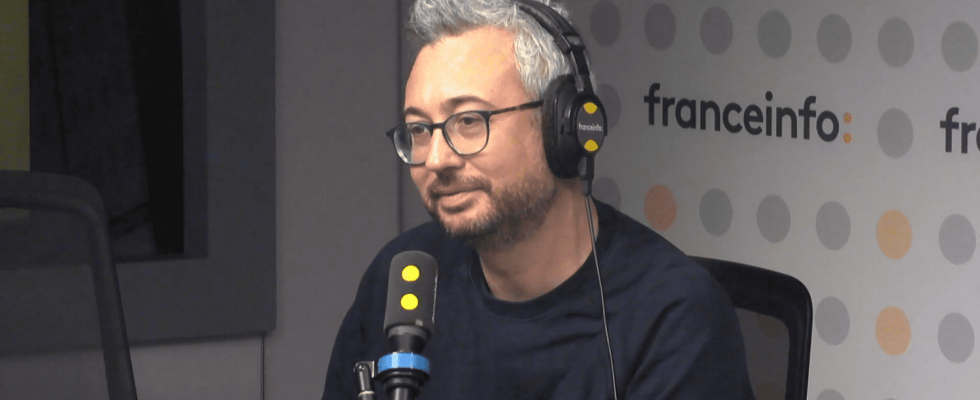Under the leadership of Ronan Letoqueux, the channel’s videos have attracted 300,000 subscribers since 2019.
Published
Reading time: 7 min

Originally from Côtes-d’Armor, Ronan Letoqueux is a screenwriter, actor, director, producer and specializes in the creation of audiovisual content broadcast on YouTube. It is in March 2019 that the broadcast of the Vortex, a cultural and humorous science popularization web show in collaboration with Arte. A somewhat experimental project because The Vortex has the particularity of being an independent channel on YouTube and which is not broadcast on Arte TV. “We are truly autonomous,” he specifies. It was a basic experiment at Arte and now there are 23 scientific videographers and artists who question and challenge each other to help make science accessible to as many people as possible, in a fun way. A winning equation since the program is in its seventh season and has managed to bring together more than 300,000 subscribers for almost 20 million videos viewed.
franceinfo: The idea of Vortex is to make very complicated scientific principles accessible to uninitiated people. The first issue of this season focused on quantum physics. You called on a specialized videographer who you put in dialogue with a musician. Is the idea to build bridges between science and art?
Ronan Letoqueux: The main idea of Vortex is to bring two creators from the Internet together to create content. The goal is to try to find things that, surprisingly, maybe wouldn’t answer each other and still have them work together to try to find something creative in there. One of the challenges of this new season is to have, on the one hand, taken people who come more from science, like the videographer ScienceClic who popularizes physics and astrophysics very well. And on the other side, we have a musician, a pianist who doesn’t know this area at all. We need to bring them into contact and try to get them to create something together that will allow us to actually experience quantum physics. We don’t do math, we don’t do analysis, it’s not to fundamentally understand quantum physics, because it’s extremely complicated, but it’s more to try to make it felt through something something that is quite common to everyone, music.
During the season, there will be themes that may seem a little less specific, for example, can aviation be green? What are beauty products used for? How to photograph the creation of a star? There are 23 videographers supporting you, each has their own YouTube channel, is that the criterion?
They all exist on the web, but there are people who come more from Twitch, which has now become a somewhat essential platform. We even had someone who was from Tik Tok, but who is also often on YouTube and Twitch. In general, they are a bit cross-platform. The goal is still to welcome popularizers from the Internet.
How does popularization work in general on YouTube? Do the algorithms highlight these kinds of videos?
You can ask YouTube. I don’t think it’s fundamentally emphasized, quite simply because it’s not as salesy as the most watched content like entertainment.
“The goal is not necessarily to live directly from the views, because we are in a niche market.”
Ronan Letoqueux, co-creator of the Le Vortex channelat franceinfo
The entire economic system that revolves around that is quite different from what you can have on a classic channel which will only depend on views.
For some, popularization is a dirty word. What feedback have you gotten from scientists and academics?
But we often work with them. Already, in the first seasons of Vortex, we were also accompanied by the CNRS who found the program interesting. There, we have another episode that we shot with the Paris Observatory on atomic clocks and it’s going really well. They can see that we are interested, that we know the subject.
Science is a relatively male-dominated field. Can you find popular science YouTubers?
In any case, our goal is to highlight them as much as possible. There are as many girls as boys in the seasons of Vortex. We are going to have YouTubers or Twitchers who are less known, but we are going to bring them in because they have expertise, they are very talented and we want to give them visibility because they do quality work. It’s not easy because there aren’t as many female creators as there are male creators, we have to have a ratio of one in ten, but we decided to do that in our editorial choices.
Can we imagine one day a broadcast on television of the Vortex ?
If someone offers us something, we can always discuss it. But our core business still remains the web with its freedom and its tone.
“One problematic thing is the durations. We don’t care. We can make a video of 17 or 25 minutes. If it’s the right length, it’s the right length.”
Ronan Letoqueux, co-creator of the Le Vortex channelat franceinfo
It’s a little different.
Science must be a great playground for conspiracy theorists and spreaders of fake news, right?
We talked about it in the first seasons, the episodes are still available. It’s a complicated thing. We try to be as honest as possible in our approach. Popularization also means taking shortcuts. We do not have a choice. But we have to do it correctly, without saying stupid things, it’s essential for us. Most scripts are proofread by scientists and other popularizers. They can also give us ideas, that’s what’s interesting. In any case, we hope to produce a good quality broadcast of scientific information.
